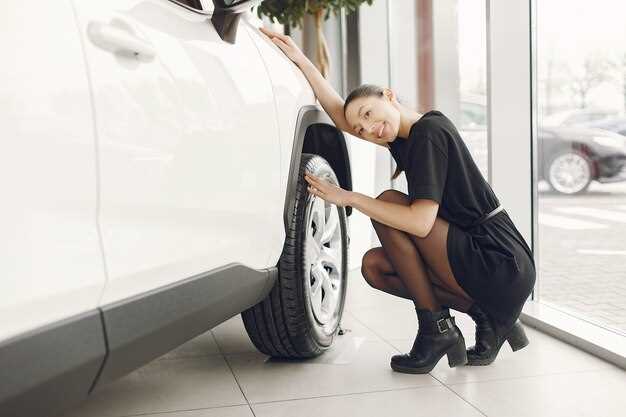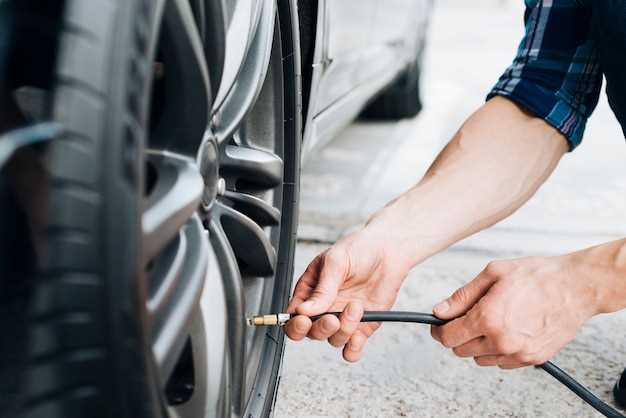
Maintaining your tires and rims in optimal condition is essential not only for the longevity of your vehicle but also for your safety on the road. Regular cleaning and inspection of your tires and rims can prevent premature wear and costly replacements. This guide will provide you with effective tips to ensure that both your tires and rims remain in excellent shape for years to come.
The first step in tire maintenance is understanding the importance of proper cleaning techniques. Accumulated dirt, brake dust, and grime can compromise the integrity of your rims and tires, leading to potential issues such as uneven wear or damage. Regularly washing your rims with appropriate cleaning agents designed specifically for automotive wheels will not only enhance their appearance but also protect against corrosion and rust.
Additionally, checking the air pressure and tread depth of your tires plays a crucial role in vehicle safety and performance. Properly inflated tires improve fuel efficiency and handling, while sufficient tread depth ensures optimal traction. By combining these practices with regular cleaning, you can significantly prolong the life of your tires and rims, ensuring a smoother, safer ride.
Best Practices for Applying Tire Shine to Enhance Longevity
Applying tire shine effectively can significantly improve the appearance of your tires and rims while also providing protection against harsh environmental elements. To achieve the best results and enhance the longevity of both tires and rims, consider the following practices.
First and foremost, ensure that the tires are clean before application. Use a dedicated tire cleaner to remove dirt, grime, and old tire dressing. Rinse thoroughly with water and allow the tires to dry completely. This step is crucial as any residual contaminants can hinder proper adhesion of the tire shine.
When selecting a tire shine product, opt for one that is water-based rather than solvent-based. Water-based formulas are generally safer for the rubber composition of the tire and are less likely to cause damage over time. Additionally, these products often offer UV protection, which helps prevent cracking and fading.
Apply the tire shine with a dedicated applicator. A foam or cloth applicator ensures even distribution and minimizes the risk of overspray on the rims. Start by applying a small amount of product on the applicator, then spread it evenly across the tire’s sidewall, working from top to bottom.
Avoid excessive application, as too much product can lead to a greasy or slick appearance that not only looks unappealing but can also attract dirt and debris. It’s better to apply multiple thin coats rather than one heavy coat. Allow each coat to dry before applying the next.
When it comes to protecting your rims, be cautious to avoid applying tire shine directly onto the rims themselves, especially if they are metallic or painted. Tire shine can lead to a buildup that tarnishes the finish. If needed, use a separate product designed specifically for rim care to maintain their shine and protect against brake dust and road grime.
Lastly, apply tire shine in a shaded area away from direct sunlight. Heat can cause the product to dry too quickly, leading to uneven application and reduced effectiveness. By following these practices, you can extend the life of your tires and rims while achieving an appealing, well-maintained look.
Step-by-Step Guide to Deep Cleaning Your Rims

Start by gathering all necessary cleaning supplies. You will need a bucket, a soft-bristle brush, a microfiber cloth, rim cleaner specifically formulated for your type of rims, and water. Make sure to choose a cleaner that is safe for your rims, whether they are aluminum, chrome, or painted.
Next, park your vehicle on a flat surface and ensure the rims are cool to the touch. Cleaning hot rims can damage the finish. Begin by rinsing the rims with water to remove loose dirt and grime. This step is essential for preventing scratches during the cleaning process.
Once rinsed, apply the rim cleaner according to the manufacturer’s instructions. Be generous with the application, ensuring all areas of the rim are covered. Allow the cleaner to sit for a few minutes to break down tougher dirt and brake dust.
After the cleaning solution has had time to work, take your soft-bristle brush and gently scrub the rims. Focus on intricate areas such as the spokes and crevices where dirt tends to accumulate. Use a microfiber cloth to wipe away any residue and to polish the rim for that extra shine.
Finally, rinse the rims thoroughly with water to remove all cleaning solution and dirt. Dry the rims with a clean microfiber towel to prevent water spots. For added protection against future dirt buildup, consider applying a specialized rim wax or sealant to enhance the shine and maintain cleanliness.
How to Inspect Tires for Wear and Damage Regularly

Regular inspection of your tires is essential for maintaining their performance and safety. Begin by checking the tread depth. Use a penny or a specialized tread depth gauge to measure the depth. Insert the penny into the tread; if you can see the top of Lincoln’s head, it’s time to replace your tires.
Next, examine the sides of the tires for any visible cracks, cuts, or bulges. These signs can indicate significant damage that may lead to tire failure. Pay attention to the rims as well; make sure they are free from dents or corrosion, which can affect their ability to hold the tire securely.
Don’t forget to look for uneven wear patterns. These can be caused by improper alignment, balance issues, or overinflation. If you notice unusual wear, it’s crucial to have your vehicle inspected by a professional.
Additionally, ensure your tires are clean to maintain their shine and performance. Use a cleaner specifically designed for tires to remove dirt and debris. Regular cleaning not only enhances the look but also helps you spot damage more easily.
Lastly, confirm that your tires are properly inflated. Under- or over-inflation can lead to uneven wear and impact handling. Use a reliable gauge to check the pressure monthly.





